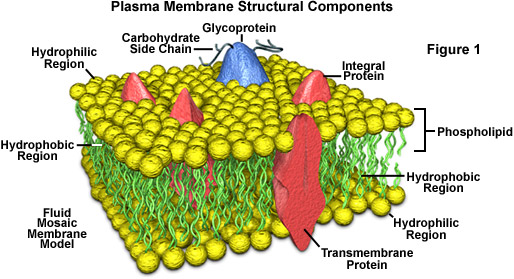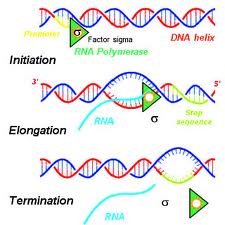
- •Географиялық – экологиялық.
- •Үш нуклеотидпен
- •Откладывает 7 яиц, вылупляется 5 птенцов, размножается 4
- •Кодондар матрицалық рнқ және днқ –да болады
- •All of the above
- •The concentration of adenine was always about the same as the concentration of thymine.
- •All of the above
- •All four statements are true.
- •Vocabulary Word
Vocabulary Word
a. codon |
b. exons |
c. genetic code |
d. introns |
e. mRNA |
f. promoter |
g. protein synthesis |
h. reading frame |
i. splicing |
j. tRNA |
k. transcription |
l. translation |
2.13 Кез келген ДНҚ-ның бірін-бірі толықтыратын нуклеотидтер жұбының суретін салып, астына заттарды және химиялық байланыс типтерін жазындар (3)

Аденин мен тимин арасында сутекті байланыс түзіледі.
Цитозин мен гуанин арасында да сутекті байланыс түзіледі.
[15]
Question 3: LONG QUESTIONS / PROBLEM SOLVING / INVESTIGATION
3.1 Денатурация дегеніміз - бұл табиғатын жоғалту — табиғи қасиеттерінен толық немесе жартылай айырылу. Оның ішінде тіршіліктілік белсенділігінен де айырылу.Денатурация кезінде молекуланың табиғи структурасы өзгереді. (5)
3.2 Describe the structure and function of the plasma membrane. (5)

Structure
the plasma membrane has been frequently described as a fluid mosaic.
The plasma membrane consists of both lipids and proteins.
Plasma membrane consist of phospholipid bilayer which forms a barrier between two aqueous mediums.
Hydrophilic(water-loving) regions are situated inside and outside of the cell. Hydrophobic (which avoid water) regions are situated inside two phospholipid layers.
Function The plasma membrane surrounds the outside of both Eukaryotic and Prokaryotic cells. It controls the movement of various substances into and out of the cell. One of main functions of plasma membrane is to serve as a barrier from the outside environment (like a boundary). The plasma membrane is permeable to specific molecules, however, and allows nutrients and other essential elements to enter the cell and waste materials to leave the cell.
3.3 Describe what occurs in each of the three stages of transcription. (5)

Initiation is the beginning of transcription. It occurs when the enzyme RNA polymerase binds to a
region of a gene called the
promoter. This signals the DNA to unwind so the enzyme can “read”
the bases in one of the DNA strands. The enzyme is ready to make a strand of mRNA with a
complementary sequence of bases.
Elongation is the addition of nucleotides to the mRNA strand.
Termination is the ending of transcription. The mRNA strand is complete, and it detaches from DNA.
[15]
Name: |
___________________________________ |
Surname: |
___________________________________ |
Grade: |
___________________________________ |
Teacher: |
___________________________________ |
For each question there are four possible answers A, B, C and D. Choose the one you consider correct and record your choice on the Answer Sheet below.
QUESTION 1: Multiple Choice |
||||||||
|
||||||||
1.1 |
A |
|
B |
|
C |
|
D |
|
|
||||||||
1.2 |
A |
|
B |
|
C |
|
D |
|
|
||||||||
1.3 |
A |
|
B |
|
C |
|
D |
|
|
||||||||
1.4 |
A |
|
B |
|
C |
|
D |
|
|
||||||||
1.5 |
A |
|
B |
|
C |
|
D |
|
|
||||||||
1.6 |
A |
|
B |
|
C |
|
D |
|
|
||||||||
1.7 |
A |
|
B |
|
C |
|
D |
|
|
||||||||
1.8 |
A |
|
B |
|
C |
|
D |
|
|
||||||||
1.9 |
A |
|
B |
|
C |
|
D |
|
|
||||||||
1.10 |
A |
|
B |
|
C |
|
D |
|
|
||||||||
1.11 |
A |
|
B |
|
C |
|
D |
|
|
||||||||
1.12 |
A |
|
B |
|
C |
|
D |
|
|
||||||||
1.13. |
A |
|
B |
|
C |
|
D |
|
|
||||||||
1.14 |
A |
|
B |
|
C |
|
D |
|
|
||||||||
1.15. |
A |
|
B |
|
C |
|
D |
|
|
||||||||
1.16 |
A |
|
B |
|
C |
|
D |
|
|
||||||||
1.17 |
A |
|
B |
|
C |
|
D |
|
|
||||||||
1.18 |
A |
|
B |
|
C |
|
D |
|
|
||||||||
1.19 |
A |
|
B |
|
C |
|
D |
|
|
||||||||
1.20 |
A |
|
B |
|
C |
|
D |
|
|
||||||||
1.21 |
A |
|
B |
|
C |
|
D |
|
|
||||||||
1.22 |
A |
|
B |
|
C |
|
D |
|
|
||||||||
1.23 |
A |
|
B |
|
C |
|
D |
|
|
||||||||
Biology
Grade 11 – Term 3, 2013 Page
